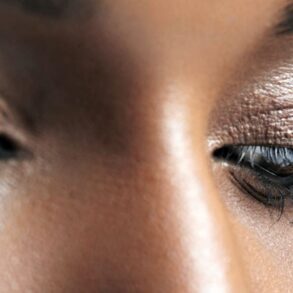
Warning: This story contains spoilers for May December.
There are certain ethical lines an actor shouldn’t cross when portraying a real (still living) person — but in May December, Natalie Portman‘s character leaps over every single one.
When television star Elizabeth Berry (Portman) travels to Georgia to enmesh herself in the lives of Gracie Atherton-Yoo (Julianne Moore) and Joe Yoo (Charles Melton), her intentions don’t seem all that noble. But considering that Gracie and Joe’s marriage came out of a tabloid fodder affair that began when he was only 13 years old, she can be forgiven.
Until she begins to subsume Gracie’s identity, slipping into her lisp and her physicality as she turns over all the stones of her life. Elizabeth takes things entirely too far when she sleeps with Joe, slowly seducing him until he gives into her and then turning on him the second it’s over.
“She is not the most ethically sound researcher,” Portman admits. “There’s this question and danger about whether art can be amoral. In the class with the students, they ask her, ‘Why would you want to play a bad character?’ And she says, ‘What a lot of us would say is that characters who do bad things are the most interesting, and it’s about not judging your character. What we’re curious about is getting into the heart of a human, which is always complicated and never perfect.'”
“When you go there and when you go into places that her movie is exploring — and trying to get into the mindset and the heart of someone who’s committing a crime — what does that do to you?” she continues. “How does it affect you? How does it affect your morality and your ethics? Can art actually be immoral? Can you depict a crime without somehow endorsing it or exploiting it?”
Portman says Elizabeth’s own blurring of the lines surrounding those questions is also a poignant examination of the challenges actors face playing truly deviant characters. “When you think about the number of movies that are made about serial killers and what an actor has to go into to get into the mind of that, it’s a very intense thing,” she says. “It’s a very questionable thing. It’s a debatable thing of how much we should go there.”
We talked to Portman about why she wanted Todd Haynes to direct this movie (streaming now on Netflix), its parallels to her own life as an actress, and her fascination with themes of performance.
courtesy netflix
ENTERTAINMENT WEEKLY: It’s well chronicled that you were sent the script initially, and then, it was your idea that it would be great for Todd Haynes to direct. What was it about both him and this script that you felt made them the ideal match?
NATALIE PORTMAN: The script dealt with so many of the ideas that he’s wrestled with in his films over the years — women’s internal lives and questions of identity and performance that are so intertwined. It had such a unique tone, and he’s a master of tone. I had wanted to work with him for so long. I had sent him a few things over the years that he had said no to. So, this was very exciting and lucky that he was interested.
You have a really challenging task here, which is that you have to slowly, by osmosis, absorb Julianne’s mannerisms and speech patterns and her appearance as Gracie. Were you constantly watching footage? Was it collaborative? What was your process?
Julie is such a magnificent actress, but she’s also a very generous actress. So when she was creating her character, she was thinking what’s right for the character, but also, what can Natalie actually copy? Things like the lisp served both functions. And despite having no rehearsal time, we shot in semi-chronological order. So as much as possible, we went from earlier parts of the movie to later parts so that I could pick up in real time Julie and Gracie’s mannerisms and speech patterns. I was really studying Julie when I was playing Elizabeth studying Gracie.
Since it was semi-chronological, how did you track that for Elizabeth deciding, the lisp slips in here, and by here, the hair changes, and things like that?
Well, the hair and makeup and the wardrobe team were very helpful. We went through that together to make decisions about when things would start showing up. It was a balance of having it progressively get more intense, but also not having it be so visible to Gracie that it would be jarring to her. Because if someone is completely you in front of you, it would be alarming in a way that might affect her behavior, whereas little hints of it are more menacing. That’s why the scenes alone are so important because then Elizabeth can really try these things out in full.
Did you define a point she reaches in the story where she’s so subsumed by this that she doesn’t realize some of the things she’s doing? Or is it all very conscious?
There’s many points. Even early on in the scene at the dress shop, I don’t think Elizabeth necessarily knows that she’s copying Gracie’s physicality. Sometimes you are trying to take mental notes and then you’re actually doing it in real life. Then, by the end, in the graduation scene, there’s an aspect to her that’s just taken on these characteristics, but she is not as conscious of the performance as she should be.
Did you have to swap wigs to go from Elizabeth with bangs to Gracie with no bangs?
It was the same wig just styled differently. There were big conversations about where we could start from that we could morph into Gracie’s hair without changing the color, because that seems a little bit too extreme.
Everett Collection
Elizabeth is pursuing this project because she wants to escape the box of her long-running TV series, and you’ve been acting for a very long time. How did you relate to that? Were there particular boxes you felt you’ve had to outrun?
I feel like I’ve often had to, because when you’re around a long time, it’s very easy to bore people. You constantly have to be exploring new avenues of curiosity and trying to find new challenges and new ways to work, explore, and prepare. To keep it something that feels like you’re learning and growing and changing. Hopefully that is more interesting to an audience when you’re also trying to challenge yourself.
The role is also self-referential in some ways. Was that your idea to put that in? Was it screenwriter Samy Burch’s? How scary is that for you to put those little meta things in there?
The script is a hundred percent Samy. There was no improv or anything like that. Playing an actress, a lot of it can feel self-referential, but it also gives you a lot of insight from your own 30 years of experience that can be put into it — the questions people ask you, the expectations strangers have when they meet you, the ways you behave that might not be true to yourself, the ways that you’re performing, even when you’re not technically performing. All of it is super interesting to me — the public self, the private self, and the performative nature of being female in general, even if you’re not an actress. The way you try and act stereotypically feminine and the way you dress or the way you behave. There’s so many levels of performance that add up to identity. For an actress who’s also performing, it’s another layer. It’s all the questions I’ve been obsessed with, and I keep returning to unconsciously,
Consciously, what keeps you returning to that theme?
Being a public person from a very young age and having a feeling like there was a private me and a public me — a me that other people thought I was and the me I pretended to be [for other people]. There’s so many different layers. Constructing your identity so that it can hold all of those within it as something true. And then also the question of artifice. I’m so curious about accepting the artifice in what we do and leaning into it and exploring it. I think about when painting had to deal with photography and started becoming abstract. I feel similarly in film that there’s another way to approach it that’s not just going for naturalism. I can have a lot of emotional expressiveness through embracing artifice and performance.
Want more movie news? Sign up for Entertainment Weekly‘s free newsletter to get the latest trailers, celebrity interviews, film reviews, and more.
Related content:
This post was originally published on this site be sure to check out more of their content.









